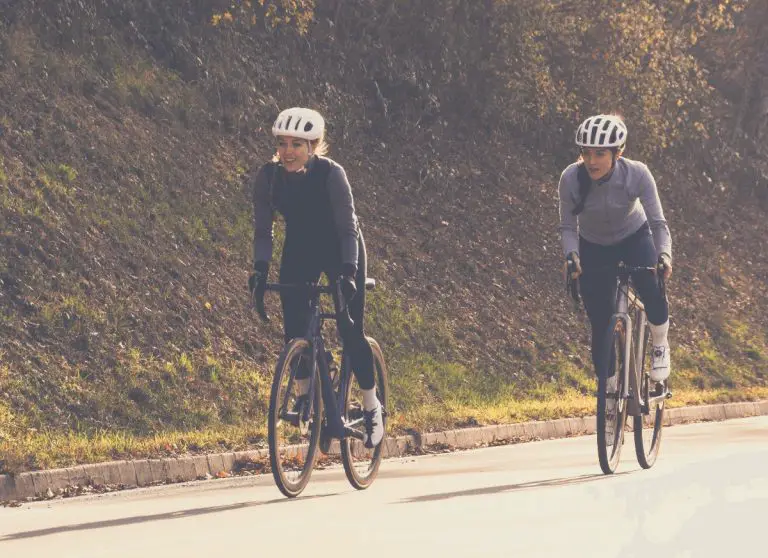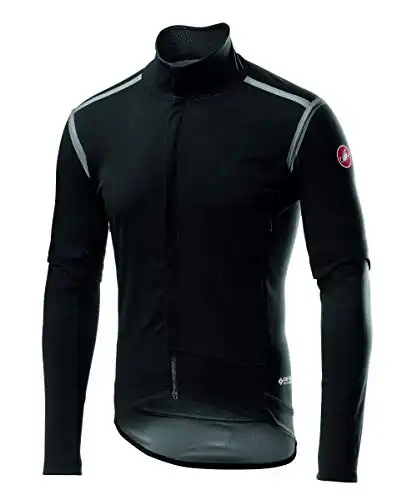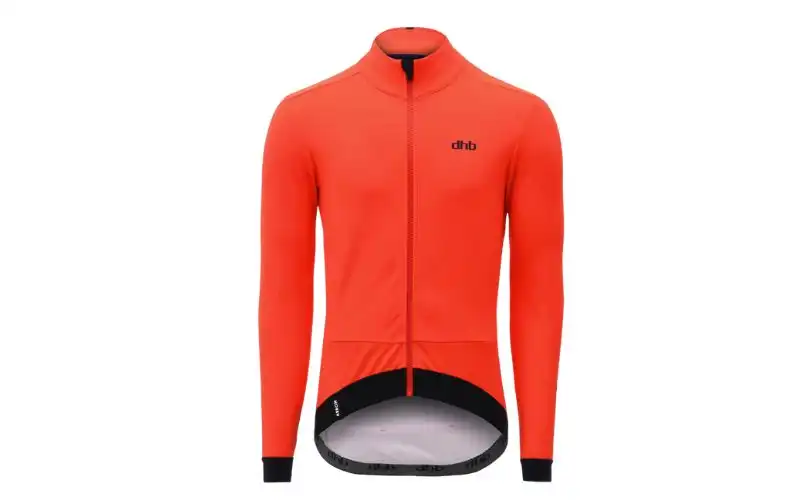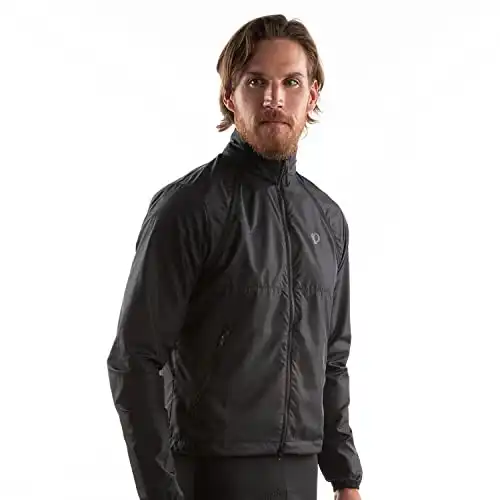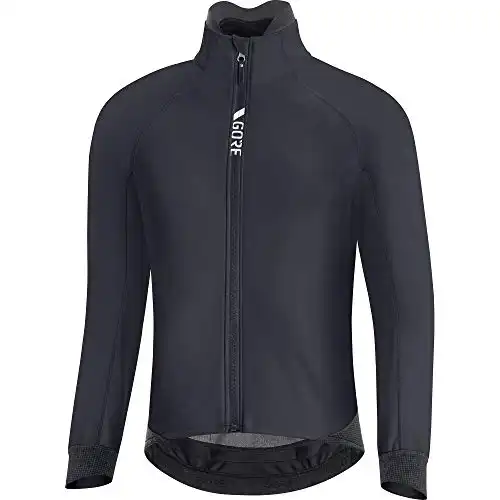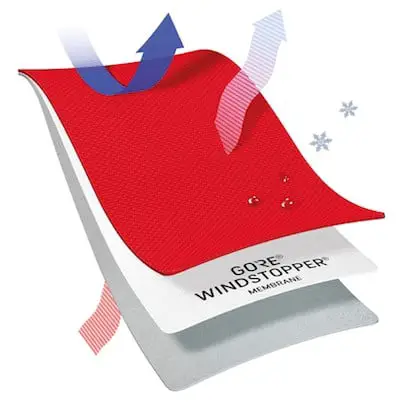The first time you ever took a winter bike ride, did you think much about which jacket to wear? I didn’t. I just yanked one from the closet.
That didn’t work out well for us, did it?
With the right gear, you can continue cycling comfortably and safely all winter long. And what’s the most crucial piece of gear? A reliable winter cycling jacket, of course!
But with so many options on the market, it can be overwhelming to choose the right one. That’s why we’ve done the research for you and compiled a list of the 5 best winter cycling jackets that will keep you warm, dry, and stylish on your rides.
So, let’s dive in and find your perfect winter cycling companion!
In A Rush? Here Are Our Top Picks…
|
|
|
- Versatile convertible feature
- Gore-Tex Infinium fabric for protection
- Great for varying weather conditions
- Comes in a variety of colors
- Incredibly warm and comfortable
- Great fit and stretchy fabric
- Reflective accents for visibility
- High-quality construction
- Value for money
- Good balance of insulation and breathability
- Well-placed zipped pocket for storing essentials
Best Winter Cycling Jackets On The Market
Castelli Perfetto ROS Convertible Jacket
- Versatile convertible feature
- Gore-Tex Infinium fabric for protection
- Great for varying weather conditions
- Comes in a variety of colors
- Expensive
- Form fit is not for everyone
- Sized small, especially if you expect to wear layers beneath
First off, what I like about this jacket is its versatility. The convertible feature allows me to easily switch from a long-sleeve to a short-sleeve jacket depending on the weather conditions.
The Gore-Tex Infinium fabric also keeps me warm and dry in wet and windy conditions, which is a huge plus. The fit is also spot on, with a snug yet comfortable feel that doesn’t restrict movement while riding. A marvelous jacket choice for the aggressive rider.
In a light rainfall, drops land briefly on the fabric, it beads up, and the wind whisks them away. As much as it resists rainfall, it’s not entirely waterproof. In heavy rain conditions, I have experienced some leakage.
Another plus is the long hem flap with a reflective surface which keeps the posterior dry and visible.
It’s on the expensive side, but I’m just a sucker for Italian names!
Assos Mille GT Winter Evo Jacket
- Incredibly warm and comfortable
- Great fit and stretchy fabric
- Reflective accents for visibility
- High-quality construction
- Expensive
- Might be too warm for milder days
This Swiss jacket features NEOS fabric and offers warmth-preserving wind protection in a thin softshell. I’ve worn it on some really cold rides and I’ve never once felt chilly.
It also has a great fit – it’s snug but not too tight, and the stretchy fabric allows for easy movement while on the bike. It readily accommodates base layers and Assos has a few to pair with your Mille GT.
I also appreciate the attention to detail in the design, like the reflective accents for visibility in low-light conditions.
A couple of things that didn’t stand out for me. First, it’s definitely an investment for your winter riding being the most expensive in this roundup. Second, while it’s great for winter riding, it might be too warm for milder days. I’ve found myself getting a bit sweaty if the temperature is above the fifties.
dhb Aeron All Winter Softshell Jacket
- Value for money
- Good balance of insulation and breathability
- Well-placed zipped pocket for storing essentials
- Windproofing could be improved
- May not hold up in extreme cold conditions
You usually have to spend money to bring home a good quality winter cycling jacket, you can buck that trend with the Aeron.
The lightweight softshell mainly consists of 49% Polyester, 42% Polyamide, and 9% Elastane. This is coupled with additional insulation in critical areas like the chest and extremities.
The dhb Aeron All Winter Softshell Jacket is a good balance of utility and comfort. The mixed materials in the right places not only provide excellent insulation but also ensure breathability.
On the downside, I feel that the jacket’s versatility could be its downfall. The promise of being a ‘one jacket fits all’ solution was slightly optimistic. You will still need an additional layer for the very cold days and it isn’t as windproof as expected.
This jacket is versatile and can be worn in a variety of weather conditions. I particularly like the fact that it can be converted into a vest, making it perfect for those days when the weather is unpredictable.
One of the things I really appreciate about this jacket is its breathability. I tend to get overheated easily, but the jacket’s breathable material keeps me cool and comfortable. Even during intense workouts!
The jacket is also water-resistant, which is a huge plus for me since I live in an area that gets a lot of rain.
Pearl Izumi has described it as a semi-form fit, so neither snug nor overly relaxed. However, I found the sleeves unexpectedly tight. This means I have to take my watch off to put the jacket on and off.
My key gripe with this jacket is that it doesn’t have any pockets! Not a major issue depending on which bike I use though.
GORE WEAR Thermo Cycling Jacket
- Built with Gore-Tex leading-edge fabric technology
- Warm and cozy
- Windproof
- Reflective details for visibility
- Small and hard to reach pockets
- Not super breathable
- Bulky and not easy to pack away
It’s tough to beat the name that paved the way in foul-weather activewear. A premium product at a premium price tag.
One of the things I really like about this jacket is its warmth. The Thermo lining does a great job of trapping heat. Even on chilly days, I feel cozy and snug. It’s also windproof, which is a huge plus when you’re cycling at high speeds.
I also appreciate the jacket’s reflective details, which make me more visible to drivers when I’m cycling in low-light conditions.
It’s not too tight or too loose, and the sleeves are the perfect length. The collar is also high enough to keep my neck warm, but not so high that it’s uncomfortable. However, the pockets, albeit functional, are a bit tiny and can be hard to reach.
While the jacket is warm, it’s not super breathable, so I do get a bit sweaty during intense rides. Finally, the jacket is a bit bulky, so it’s not the easiest thing to pack away when I’m not wearing it.
Buying Guide For The Perfect Winter Cycling Jacket
Spoiler alert: there isn’t one.
Why not? Because there are three critical characteristics, and you can’t have the best of all of them.
Windproof, Rainproof, Breathable
The more weatherproof a jacket is, the less breathable it will be. No matter what sport you’re dressing for, there’s a tradeoff.
If I’m popping out to the corner store for a couple of bits of groceries, it doesn’t much matter what I choose. I can throw on something warm and forget about breathability.
But if I’m powering uphill and then catching some frigid wind on the way down, I need something that doesn’t make me sweat and then turn my perspiration into ice.
The weatherproof vs. breathable conundrum isn’t as tough as it used to be. Technology in modern fabrics keeps on improving. Manufacturers are getting more creative in confronting the challenge.
For example, some jackets use mixed materials: more windproof and waterproof on the front but more breathable on the back. Some also provide vents and pit flaps to regulate temperature.
- Drop-tail hems – On a wet road, the “roostertail” coming off your rear wheel can soak you from saddle to helmet. A long hem keeps your bottom dry.
- Cinchable hems and sleeves keep water and cold drafts out.
- Zippered air vents help you control your temperature and avoid moisture build-up.
- Pockets. Everyone needs to keep their phone dry. Also, to carry a few cold-weather snacks. The pockets are good. More pockets are better.
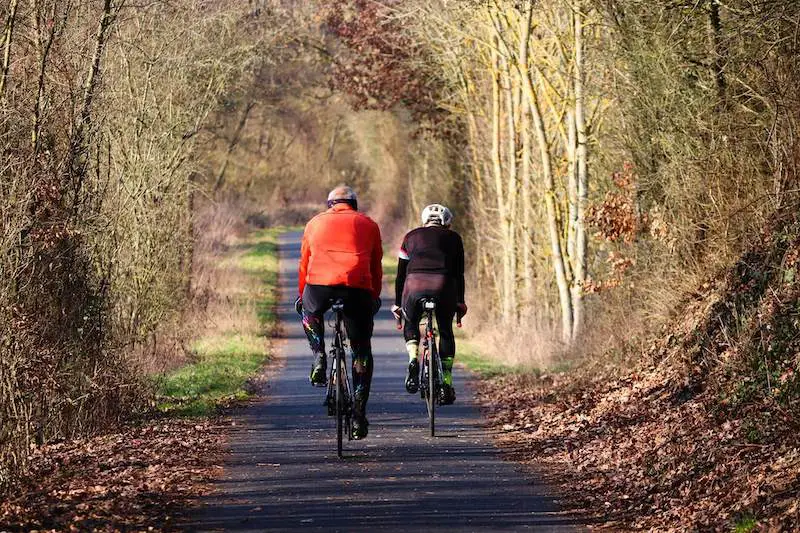
Softshell vs. Hardshell
There are hardshell jackets that will hold up to just about any weather, but most good winter cycling jackets are softshell. Those that support brisk riding need to be.
Most jackets are water-resistant rather than waterproof. That means water will bead up and roll off. They’ll do fine against road spray, light rain, or even a brief heavier shower, but they won’t protect you against a lengthy soaker.
Even in cool weather, a small amount of moisture is not terrible. Your exertion can keep you warm in spite of it. After all, you don’t suffer if your leg warmers get a little wet.
Another advantage of softshells: they’re lighter and easily packable. Some will stuff into your jersey pocket when an unexpected temperature spike occurs.
If you need more ideas on keeping warm during winter, read our guide on what to wear during winter cycling.
Material
Heavier jackets sometimes incorporate merino wool, but the ones I’ll discuss are made from lightweight fabrics such as NEOS and Gore-Tex.
Many are treated with durable water repellent (DWR). DWR makes raindrops bead up and roll off the material rather than penetrate and soak!
Choosing The Fit
Some people, especially racers, like clothes that cling to their bodies and stretch with their every move. Others prefer a more relaxed fit. Winter cycling jackets come in form fit, relaxed fit, and something in between.
Softshell jackets are usually worn with layers underneath. It’s the only way to make the same jacket comfortable on a 50-degree day as well as when the temperature is 35. If you buy too snug a jacket and layer underneath it, you may look and feel like the Michelin tire man!
If you’ve bought a few jerseys you know that cycling clothing sizes can be, to put it mildly, inconsistent. Especially between brands!
I’m an average-size guy and I usually take a medium in a club fit but may go as high as XL in a racing fit. Pay attention to sizing recommendations between brands.
Extra Features
Over the years, I’ve found that my favorite winter jackets have these extra comfort features:
Be Seen
As always, it’s important to keep safe during your rides. Even on the best winter days, there isn’t much visibility and light. If your jacket isn’t a bright color, it should have reflective accents.
Interesting read – Best Cycling Shoe Covers For Wet And Winter Rides
The Best Winter Cycling Jacket Goes To…
The Castelli Perfetto ROS. The stylish form fit encourages me to keep riding despite the elements, and I feel good while doing so.
It has all the critical features: water beading, wind resistance, breathability, venting zips, long hem, visibility, and pockets. Perhaps it’s the zip-off sleeves that put it over the top.
As for my color choice, I’ll make sure I’m seen by motorists as well as my fellow cyclists in the yellow fluro jacket 😃.
Need some extra protection for your hands during cold rides? Check out the best winter cycling gloves so your hands don’t freeze!

